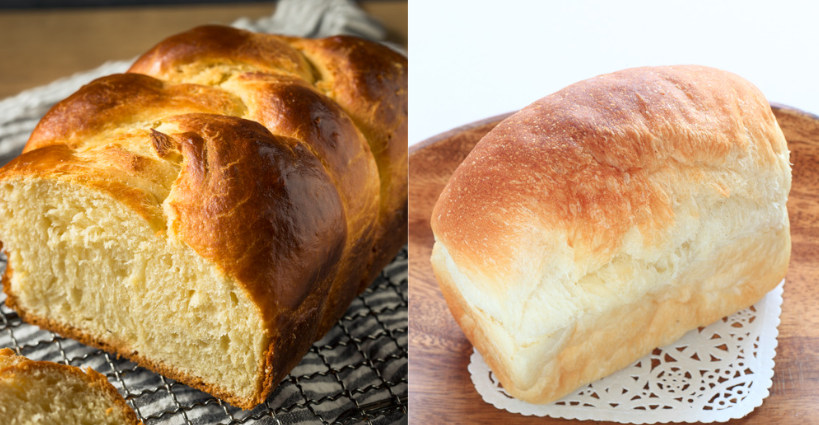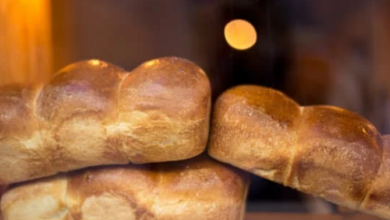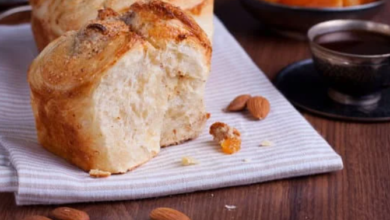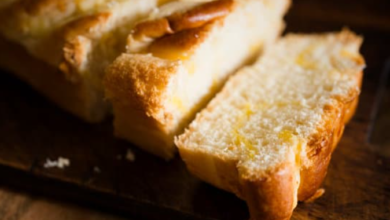Brioche Vs. Milk Bread: Two Different Breads With Different Tastes

What To Know
- It is made with a dough that includes milk, sugar, and butter, giving it a sweeter, softer texture and a slightly tangy flavor.
- Milk bread has a milder flavor compared to brioche, with a subtle sweetness from the milk and sugar.
- Brioche is the epitome of richness and lightness, while milk bread exudes a gentle sweetness and a soft, pillowy texture.
When it comes to the world of bread, brioche and milk bread stand out as two of the most popular and delectable options. Both boasting a rich, buttery flavor and a soft, pillowy texture, these breads have captured the hearts of bread enthusiasts everywhere. But what exactly sets them apart? Let’s delve into the fascinating world of brioche vs milk bread and discover their unique characteristics, similarities, and differences.
Origin and History
Brioche
Brioche, with its golden-brown crust and airy interior, originated in France during the 16th century. It is believed to have been created by bakers who added butter and eggs to a traditional bread dough, resulting in a richer, more flavorful loaf. Brioche quickly became a favorite among the French aristocracy and has since become a staple of French cuisine.
Milk Bread
Milk bread, on the other hand, is a more recent creation, originating in Japan in the 20th century. It is made with a dough that includes milk, sugar, and butter, giving it a sweeter, softer texture and a slightly tangy flavor. Milk bread has become immensely popular in Japan and has gained widespread recognition around the world.
Ingredients
Brioche
- Bread flour
- Butter
- Eggs
- Milk
- Yeast
- Salt
Milk Bread
- Bread flour
- Milk
- Sugar
- Butter
- Yeast
- Salt
Texture and Flavor
Brioche
- Texture: Brioche has a light, fluffy texture with a delicate crumb and a soft, almost velvety mouthfeel.
- Flavor: Brioche is characterized by its rich, buttery flavor with a hint of sweetness from the eggs.
Milk Bread
- Texture: Milk bread has a soft, pillowy texture that is slightly denser than brioche. It has a slightly chewy interior and a tender, fluffy crust.
- Flavor: Milk bread has a milder flavor compared to brioche, with a subtle sweetness from the milk and sugar. It has a slightly tangy undertone that adds complexity to its taste.
Uses
Brioche
- Sweet: Brioche is often used in sweet preparations such as pastries, croissants, and French toast.
- Savory: Brioche can also be used in savory dishes, such as sandwiches, burgers, and stuffing.
Milk Bread
- Sweet: Milk bread is commonly used in Japanese cuisine for sweet dishes such as melon pan (melon bread) and anpan (red bean bread).
- Savory: Milk bread can also be used in savory dishes, such as sandwiches, toast, and rolls.
Nutritional Value
Brioche
- Calories: 340 per slice
- Fat: 20 grams per slice
- Protein: 8 grams per slice
- Carbohydrates: 40 grams per slice
Milk Bread
- Calories: 280 per slice
- Fat: 15 grams per slice
- Protein: 7 grams per slice
- Carbohydrates: 35 grams per slice
Which Bread Is Right for You?
The choice between brioche and milk bread ultimately depends on your personal preferences and intended use.
- If you prefer a rich, buttery flavor and a light, fluffy texture: Brioche is the perfect choice.
- If you prefer a milder flavor and a soft, slightly chewy texture: Milk bread is a great option.
- For sweet preparations: Brioche is a better choice due to its sweeter flavor and flaky texture.
- For savory dishes: Both brioche and milk bread can be used, depending on your preference for flavor and texture.
Beyond the Basics
Variations of Brioche
- Viennese Brioche: A richer and more decadent version of brioche made with more butter and eggs.
- Savarin: A ring-shaped brioche soaked in a sweet syrup.
- Kouign-Amann: A laminated brioche pastry with a crispy, caramelized crust.
Variations of Milk Bread
- Hokkaido Milk Bread: A Japanese milk bread known for its ultra-soft and fluffy texture.
- Tangzhong Milk Bread: A milk bread made with a cooked flour-water mixture called tangzhong, which gives it an incredibly soft and moist crumb.
- Shokupan: A square-shaped milk bread popular in Japan, often used for sandwiches and toast.
The Verdict: A Matter of Taste
In the end, the brioche vs milk bread debate boils down to a matter of personal preference. Both breads offer unique textures, flavors, and uses. Brioche is the epitome of richness and lightness, while milk bread exudes a gentle sweetness and a soft, pillowy texture. Whether you choose brioche for its decadent indulgence or milk bread for its comforting simplicity, you can’t go wrong with either of these exceptional breads.
Questions You May Have
1. Which bread has a higher calorie count?
Brioche has a higher calorie count than milk bread, with 340 calories per slice compared to 280 calories per slice.
2. Which bread is better for sandwiches?
Both brioche and milk bread can be used for sandwiches, but milk bread is a more popular choice due to its softer texture and milder flavor.
3. Which bread is more suitable for French toast?
Brioche is the preferred choice for French toast due to its rich, buttery flavor and light, airy texture.





